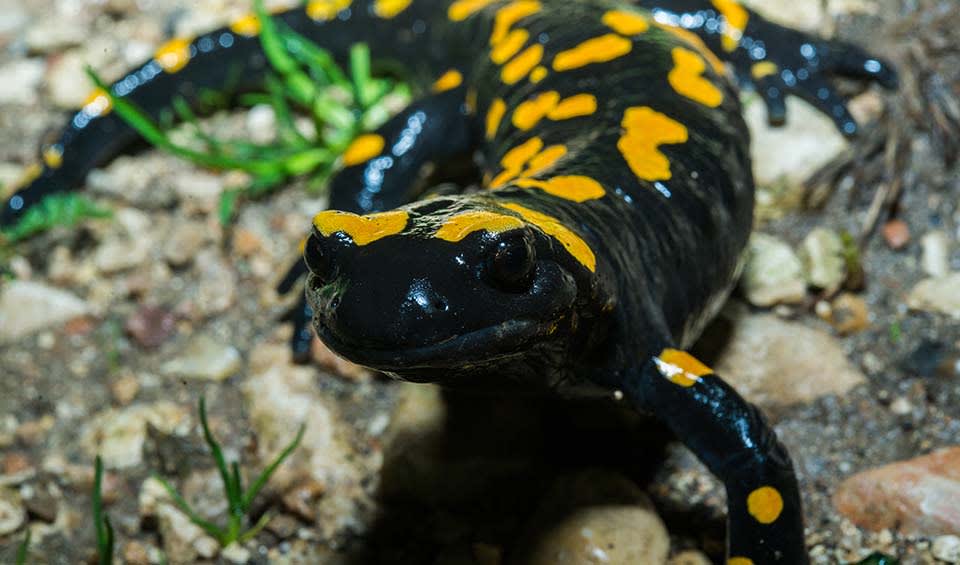An amphibian of vibrant contrast and ecological significance, it is found across various Middle Eastern countries, including Israel, Iran, Iraq, Turkey, Syria, and Lebanon. This species is readily identified by its distinctive skin pattern: a dark, often black base color speckled with bright yellow to orange spots or stripes that warn potential predators of its toxicity.
Fire salamanders secrete a potent toxin from their skin glands as a defense mechanism against predation. The toxin can cause irritation and harmful effects in many would-be predators, ensuring the salamander’s survival in the wild. This particular species has a preference for pristine habitats, often residing near clear, unpolluted streams or springs. Their reliance on such clean water bodies makes them vulnerable to water contamination and indicates environmental health.
Exhibiting a cryptic lifestyle, the Near Eastern fire salamander is typically a nocturnal creature. It finds refuge during the day in damp, shaded areas such as under logs, rocks, or dense leaf litter, which provide the necessary moisture for its skin. These hiding spots also serve as excellent vantage points for ambushing prey. Their diet is varied and opportunistic, including invertebrates like beetles, millipedes, and flies, which they capture quickly with a sticky tongue.
Unfortunately, the Near Eastern fire salamander faces many threats that put its survival at risk. Habitat fragmentation due to urban expansion, agriculture, and infrastructural development has significantly reduced its living space. Environmental pollution, particularly in waterways, can be deadly to the salamanders and the aquatic invertebrates they feed on. The illegal pet trade has also impacted some populations, as their striking appearance makes them attractive to collectors.
Distribution
 Iraq
Iraq Israel
Israel Lebanon
Lebanon Syria
Syria Turkey
TurkeyAnything we've missed?
Help us improve this page by suggesting edits. Glory never dies!
Suggest an editGet to know me
Terrestrial / Aquatic
Altricial / Precocial
Polygamous / Monogamous
Dimorphic (size) / Monomorphic
Active: Diurnal / Nocturnal
Social behavior: Solitary / Pack / Herd
Diet: Carnivore / Herbivore / Omnivore / Piscivorous / Insectivore
Migratory: Yes / No
Domesticated: Yes / No
Dangerous: Yes / No





